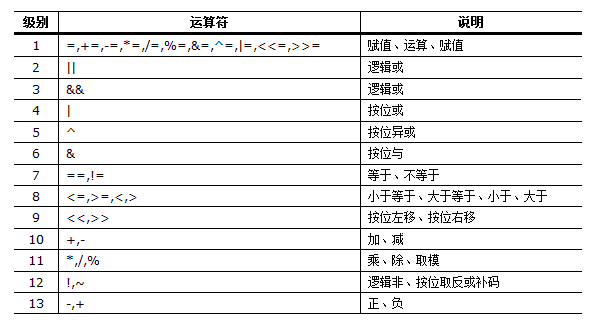time_t
mktime (struct tm *tp)
{
#ifdef _LIBC
time zone names contained in the external variable 'tzname' shall
be set as if the tzset() function had been called. */
__tzset ();
#endif
return __mktime_internal (tp, __localtime_r, &localtime_offset);
}
the monotonic and mostly-unit-linear conversion function CONVERT.
Use *OFFSET to keep track of a guess at the offset of the result,
compared to what the result would be for UTC without leap seconds.
If *OFFSET's guess is correct, only one CONVERT call is needed.
This function is external because it is used also by timegm.c. */
time_t
__mktime_internal (struct tm *tp,
struct tm *(*convert) (const time_t *, struct tm *),
time_t *offset)
{
time_t t, gt, t0, t1, t2;
struct tm tm;
to handle any combinations of time zone rule changes, solar time,
leap seconds, and oscillations around a spring-forward gap.
POSIX.1 prohibits leap seconds, but some hosts have them anyway. */
int remaining_probes = 6;
occur if TP is localtime's returned value and CONVERT is localtime. */
int sec = tp->tm_sec;
int min = tp->tm_min;
int hour = tp->tm_hour;
int mday = tp->tm_mday;
int mon = tp->tm_mon;
int year_requested = tp->tm_year;
int isdst = tp->tm_isdst;
int dst2;
int mon_remainder = mon % 12;
int negative_mon_remainder = mon_remainder < 0;
int mon_years = mon / 12 - negative_mon_remainder;
long_int lyear_requested = year_requested;
long_int year = lyear_requested + mon_years;
the remaining code handles minor overflows correctly,
assuming int and time_t arithmetic wraps around.
Major overflows are caught at the end. */
The result need not be in range. */
int mon_yday = ((__mon_yday[leapyear (year)]
[mon_remainder + 12 * negative_mon_remainder])
- 1);
long_int lmday = mday;
long_int yday = mon_yday + lmday;
time_t guessed_offset = *offset;
int sec_requested = sec;
if (LEAP_SECONDS_POSSIBLE)
{
since ydhms_tm_diff assumes every minute has 60 seconds. */
if (sec < 0)
sec = 0;
if (59 < sec)
sec = 59;
}
time. */
t0 = ydhms_diff (year, yday, hour, min, sec,
EPOCH_YEAR - TM_YEAR_BASE, 0, 0, 0, - guessed_offset);
if (TIME_T_MAX / INT_MAX / 366 / 24 / 60 / 60 < 3)
{
for major overflows. A gross check suffices, since if t0
has overflowed, it is off by a multiple of TIME_T_MAX -
TIME_T_MIN + 1. So ignore any component of the difference
that is bounded by a small value. */
biennium. A biennium is 2 years; use this unit instead of
years to avoid integer overflow. For example, 2 average
Gregorian years are 2 * 365.2425 * 24 * 60 * 60 seconds,
which is 63113904 seconds, and rint (log2 (63113904)) is
26. */
int ALOG2_SECONDS_PER_BIENNIUM = 26;
int ALOG2_MINUTES_PER_BIENNIUM = 20;
int ALOG2_HOURS_PER_BIENNIUM = 14;
int ALOG2_DAYS_PER_BIENNIUM = 10;
int LOG2_YEARS_PER_BIENNIUM = 1;
int approx_requested_biennia =
(SHR (year_requested, LOG2_YEARS_PER_BIENNIUM)
- SHR (EPOCH_YEAR - TM_YEAR_BASE, LOG2_YEARS_PER_BIENNIUM)
+ SHR (mday, ALOG2_DAYS_PER_BIENNIUM)
+ SHR (hour, ALOG2_HOURS_PER_BIENNIUM)
+ SHR (min, ALOG2_MINUTES_PER_BIENNIUM)
+ (LEAP_SECONDS_POSSIBLE
? 0
: SHR (sec, ALOG2_SECONDS_PER_BIENNIUM)));
int approx_biennia = SHR (t0, ALOG2_SECONDS_PER_BIENNIUM);
int diff = approx_biennia - approx_requested_biennia;
int approx_abs_diff = diff < 0 ? -1 - diff : diff;
gives a positive value of 715827882. Setting a variable
first then doing math on it seems to work.
(ghazi@caip.rutgers.edu) */
time_t time_t_max = TIME_T_MAX;
time_t time_t_min = TIME_T_MIN;
time_t overflow_threshold =
(time_t_max / 3 - time_t_min / 3) >> ALOG2_SECONDS_PER_BIENNIUM;
if (overflow_threshold < approx_abs_diff)
{
the time zone offset is enough to undo the overflow. */
time_t repaired_t0 = -1 - t0;
approx_biennia = SHR (repaired_t0, ALOG2_SECONDS_PER_BIENNIUM);
diff = approx_biennia - approx_requested_biennia;
approx_abs_diff = diff < 0 ? -1 - diff : diff;
if (overflow_threshold < approx_abs_diff)
return -1;
guessed_offset += repaired_t0 - t0;
t0 = repaired_t0;
}
}
for (t = t1 = t2 = t0, dst2 = 0;
(gt = guess_time_tm (year, yday, hour, min, sec, &t,
ranged_convert (convert, &t, &tm)),
t != gt);
t1 = t2, t2 = t, t = gt, dst2 = tm.tm_isdst != 0)
if (t == t1 && t != t2
&& (tm.tm_isdst < 0
|| (isdst < 0
? dst2 <= (tm.tm_isdst != 0)
: (isdst != 0) != (tm.tm_isdst != 0))))
between two values. The requested time probably falls
within a spring-forward gap of size GT - T. Follow the common
practice in this case, which is to return a time that is GT - T
away from the requested time, preferring a time whose
tm_isdst differs from the requested value. (If no tm_isdst
was requested and only one of the two values has a nonzero
tm_isdst, prefer that value.) In practice, this is more
useful than returning -1. */
goto offset_found;
else if (--remaining_probes == 0)
return -1;
value, if any. */
if (isdst_differ (isdst, tm.tm_isdst))
{
time with the right value, and use its UTC offset.
Heuristic: probe the adjacent timestamps in both directions,
looking for the desired isdst. This should work for all real
time zone histories in the tz database. */
tzdata2003a, the shortest period of DST is 601200 seconds
(e.g., America/Recife starting 2000-10-08 01:00), and the
shortest period of non-DST surrounded by DST is 694800
seconds (Africa/Tunis starting 1943-04-17 01:00). Use the
minimum of these two values, so we don't miss these short
periods when probing. */
int stride = 601200;
(e.g., America/Jujuy starting 1946-10-01 01:00). The longest
period of non-DST is much longer, but it makes no real sense
to search for more than a year of non-DST, so use the DST
max. */
int duration_max = 536454000;
the duration; add the stride to avoid off-by-1 problems. */
int delta_bound = duration_max / 2 + stride;
int delta, direction;
for (delta = stride; delta < delta_bound; delta += stride)
for (direction = -1; direction <= 1; direction += 2)
if (time_t_int_add_ok (t, delta * direction))
{
time_t ot = t + delta * direction;
struct tm otm;
ranged_convert (convert, &ot, &otm);
if (! isdst_differ (isdst, otm.tm_isdst))
{
Extrapolate back to the desired time. */
t = guess_time_tm (year, yday, hour, min, sec, &ot, &otm);
ranged_convert (convert, &t, &tm);
goto offset_found;
}
}
}
offset_found:
*offset = guessed_offset + t - t0;
if (LEAP_SECONDS_POSSIBLE && sec_requested != tm.tm_sec)
{
Also, repair any damage from a false match due to a leap second. */
int sec_adjustment = (sec == 0 && tm.tm_sec == 60) - sec;
if (! time_t_int_add_ok (t, sec_requested))
return -1;
t1 = t + sec_requested;
if (! time_t_int_add_ok (t1, sec_adjustment))
return -1;
t2 = t1 + sec_adjustment;
if (! convert (&t2, &tm))
return -1;
t = t2;
}
*tp = tm;
return t;
}


